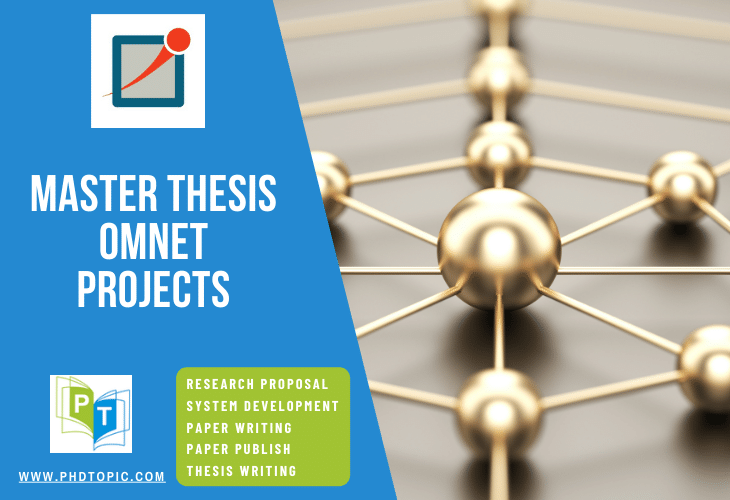Master Thesis OMNeT++ Projects
Master Thesis OMNeT++ Projects is our new platform to offer OMNET based projects and research guidance to write your Master thesis. OMNeT++ is a powerful simulator used in various wireless networks and other networks like queuing networks, communication networks, and digital logic networks. As we are working for the past ten decades, and we also have implemented nearly 1500+ projects.
Our expertise and experience are shared with worldwide countries’ researchers. Scholars have an opportunity to discuss your ideas, developments, and applications on OMNeT++ simulation models’ topics. We also offer your master thesis OMNeT++ projects with different tools and frameworks to provide guaranteed output.
–”OMNeT++ is an extensible and open source discrete event simulator. It add-ons with new features to simulate a wide range of networking areas also with the support of GUI and C++ simulation class library”.
We are supporting OMNeT++ projects in the following research areas
- Wireless Sensor Networks
- Wireless Body Area Networks
- LTE and LTE-A Networks
- Handover Mechanisms
- P2P Live Streaming
- Software Defined Networks
- Software Defined Cloud Networking
- Vehicular Ad hoc Networks
- Mobile Ad hoc Networks
 New Features in OMNeT++
New Features in OMNeT++
- Smooth Custom Animations
- Animation into a high quality video
- SQLite Result File Format also for Experimentation
- Self-refreshing figures support
- Qtenv maturity and Default GUI also for Simulations
- Module layouts among same module all graphical inspectors
- Unit conversion about Coulomb and As, Ah, mAh and mAs.
- Qt 5.4 Qtenv and OpenScene graph 3.2-3.5 and also OSGEarth 2.5-2.7
- Redesigned Command-line Interface: Scave Tool
- Cross compilation of OMNeT++ supported also in Linux host of Windows.
- GCC Compiler also in Windows version 64-bit with all libraries OSG, QT5 etc.
- Custom Figure Classes: Register_Figure() and also not using Register_Class()
Latest Development in OMNeT++
- OMNeT++ 5.1: It was released in April 03, 2017. A lot of changes are made in APIs, Components, and graphics. Changes are:
-2D and 3D graphics support (OpenSceneGraph, and also Canvas)
-New Logging API
– C++ New building large models
-New Graphical Runtime (Qtenv)
-Animation support (5.2)
-Latest version upgrading (Eclipse (4.6 Neon), and also Toolchain (9.0))
Thesis OMNeT++ Projects
Master Thesis OMNeT++ Projects is our soul service rendered by us for scholars and students to complete their research. Our organization has 100+ groundbreaking research experts who are continuously updating new ideas and invent new techniques and tools to develop your projects with more innovation and quality. Thesis is the final report also for your PhD degree that must be clearly contributing to your research. For that, we have also assigned specialized experts to write your thesis without any grammatical and technical errors.
Latest Frameworks and Development Tools:
INET 3.5.0:
- The latest framework also provides a user-friendly environment. It is used in Ad hoc networks with the help of the PASER protocol. The features of INET 3.5.0 are:
-Enhance 2D and 3D visualization
-StreamReconfig Support for SCTP
-TwoRayInterference Model support
-New WirelessNet with 2DHCP
-64-bit supported in windows.
-GPSR for parameter specification
Veins 4.5:
- The open-source framework is also used to evaluates the vehicular network simulation. This latest framework integrated Veins also with INET and SimuLTE framework. Added Features are:
-Attenuation model also for capturing antenna patterns
-Signals added for tracking vehicles (Turn signal indicators)
-Subproject Veins_INET by Veins INET 3.4.0 mobility model
-Contention window update for internal collisions
-Vehicle type mappings to use “0” (do not instantiate)
- INETMANET 3.x: Mobile Ad hoc Network (MANET) Framework, now added with a number of protocols and also experimental features.
- ANSAINET 3.3.0: Framework also used for network behavior prediction and analysis of reachability. ANSAI is an integration of ANSA (Automated Network Simulation and Analysis) and also INET frameworks. It is a publicly available framework. It is used in the following routing protocols:
-OSPFv3: Open Shortest Path v3
-VTP: VLAN Trunking Protocol
-Distance vector protocol comparison
-MSTP: Multiple Spanning Tree Protocol
-IPv6, SLAAC, and also DHCPv6 etc.
- SimuLTE: LTE based simulation framework and also it applications are gaming, VoD, VoIP, and also in Web, Handover, D2D Communications, etc. It also requires INET 3.4 and OMNET++ v5.0 for simulation
- Castalia 3.0: Network simulator also for simulating body area networks and wireless sensor networks. It also consists of a new radio module for MAC –BAN implementation using IEEE 802.15
- 6LoWPAN: OMNET++ simulation model integrates with Contiki’s. It is also used to perform simulation in INET/OMNET++/INETMANET/Contiki.
- MiXim 2.3: OMNET++ modeling framework mainly designed to simulate wireless sensor networks and ad hoc networks, body area networks, vehicular networks, etc.
- OBSModules: Enhanced Optical Switching Technology also supports optical backbones during high bandwidth demand
- MMSim: OMNET++ simulation framework also for the simulation of multimedia protocols
- CoRE4INET: INET Framework extension also for the simulation of real-time Ethernet networks
- OSG: OpenScene Graph support 3D graphics visualization also using OSGEarth libraries.
Other Frameworks:
INET Model Frameworks:
- Veins
- OverSim
- INET-HNRL
- EPON
- EBiTSim
- HIPSim++
- ReaSE
- Quagga
- And also in mCOA++
OMNET++ Protocol Model Library Support
- HMIPV6 and also in MIPV6 support using IPv6 suit
- MANET and also Mobility Protocol support
- Satellite and mobility vehicular support
- MPLS with Diffserv, also in RSVP-TE signaling, LDP etc.
- MAC protocols: Ideal MAC, BMAC, LMAC, CSMA CaMac, and also in Wireless Nic.
- Link layer protocols (wire and wireless): Ethernet, IEEE 802.16e, IEEE 802.11, PPP, STP, and also in LTE user plane, RSTP.
- Internet stack models: OSPF, TCP, UDP, BGP, AODV, andalso in AODV-UU, HTTP, DHCP, ARP, DYMO, OLSR, RIP, HIP etc.
OMNeT++ Modules Support
- LTE module
- ZigBee module
- SimuLTE module
- JSimple module
- Wimax module
- Precision time protocol module
- Csharpsimple module
- M-DNS and DNS module
